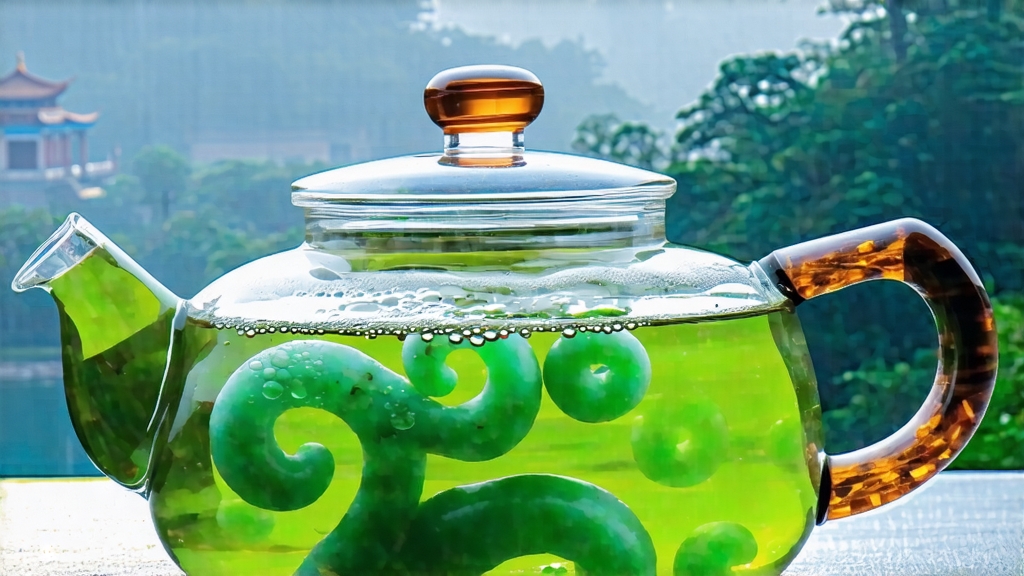
Biluochun, whose name translates literally to “Green Snail Spring,” is one of China’s ten most celebrated teas, yet it remains curiously under-celebrated outside the circles of serious tea aficionados. Produced exclusively from the tiny, mist-wrapped islands and hills that ring East China’s Taihu Lake, Biluochun seduces with a fragrance so intense that, when first encountered, many drinkers assume leaves have been artificially scented. Nothing could be further from the truth: the tea’s arresting aroma of white peach, orchid and ripe lychee is the result of centuries-old horticultural symbiosis between fruit trees and tea bushes, coupled with a finicky craft that demands each leaf be rolled into a tight spiral within minutes of plucking.
Historical whispers
Recorded references appear as early as the Tang Dynasty (618-907 CE), but Biluochun’s definitive moment came during the late Ming Dynasty. Legend claims a nun roaming Dongting Mountain found a mysteriously fragrant wild tea, brewed it for the local prefect, and watched him instantly abandon his paperwork in rapture. The prefect christened the tea “Scary Fragrance” (Xia Sha Ren Xiang), a name later softened by the Kangxi Emperor during his 1699 inspection tour of the south. After sampling it at the lake’s misty dawn, the emperor renamed it Biluochun to honor its jade spirals and spring harvest. The Qing court’s subsequent obsession propelled tiny Dongting Dongshan and Xishan villages into a tea-producing aristocracy whose descendants still control micro-gardens no larger than a tennis court.
Micro-terroirs within one lake
Strict geography defines authenticity. Only leaves picked within the 120 km² core zone of Taihu’s watery basin may legally bear the name Biluochun. Within that zone, two sub-appellations matter:
- Dongshan (East Mountain): An ancient limestone outcrop connected to the mainland by a causeway only in the 1990s. Its south-facing terraces trap morning mist, yielding the most orchidaceous fragrance.
- Xishan (West Mountain): A true island whose higher elevation and diurnal temperature swing produce leaf sap with more amino acids, translating into thicker umami.
Beyond the lake, counties in Sichuan, Guizhou and Zhejiang now cultivate identical cultivars and mimic the rolling technique, marketing their tea as “spiral green.” Purists dismiss these as merely “lu cha,” not Biluochun, because the terroir’s fruit-tree understory—peach, plum, apricot, loquat and pomegranate interplanted between tea rows—is impossible to replicate at scale.
Cultivar fingerprint
The original plant is a Taihu-specific landrace known to growers as “Xiao Ye” (small-leaf) biotype. Its leaves are unusually thin, almost paper-like, allowing full penetration of fruit-blossom volatiles. The bush is kept waist-high to maximize leaf exposure to filtered light, a technique Chinese gardeners call “sanfen yin, qifen yang”—30 % shade, 70 % sun. Modern clonal selections such as Dongkui #8 and Fudingdabai have been introduced to boost yield, yet the highest grades still come from centenarian seed-grown trees whose roots have bored deep into fissured limestone, accessing mineral-rich groundwater that turbo-charges aromatic precursors.
Picking calendar: when minutes matter
Authentic Biluochun is a true spring ephemeral. Harvest opens around Grain Rain (April 20) and closes before May Day. Only the top 1.5 cm shoot—one bud plus one unfolded leaf, occasionally two—is taken. Experienced pickers finish before 9 a.m. so that dew-weighted leaves retain maximum turgidity. A single kilo of super-grade Biluochun contains roughly 70,000 such shoots, all plucked by fingernail to avoid the bruising that metal blades can cause.
Crafting a curl: the six breaths
Village workshops still follow a six-step sequence unchanged since the Qing era:
- Withering: Leaves are laid 2 cm thick on bamboo trays set under shade for 2–3 h, reducing moisture to 68 %.
- Primary firing (shaqing): A wok heated to 180 °C receives 250 g of leaf; the maker’s bare hands toss and press for 4 min, destroying leaf enzymes while locking in jade color.
- **Rolling-retraction